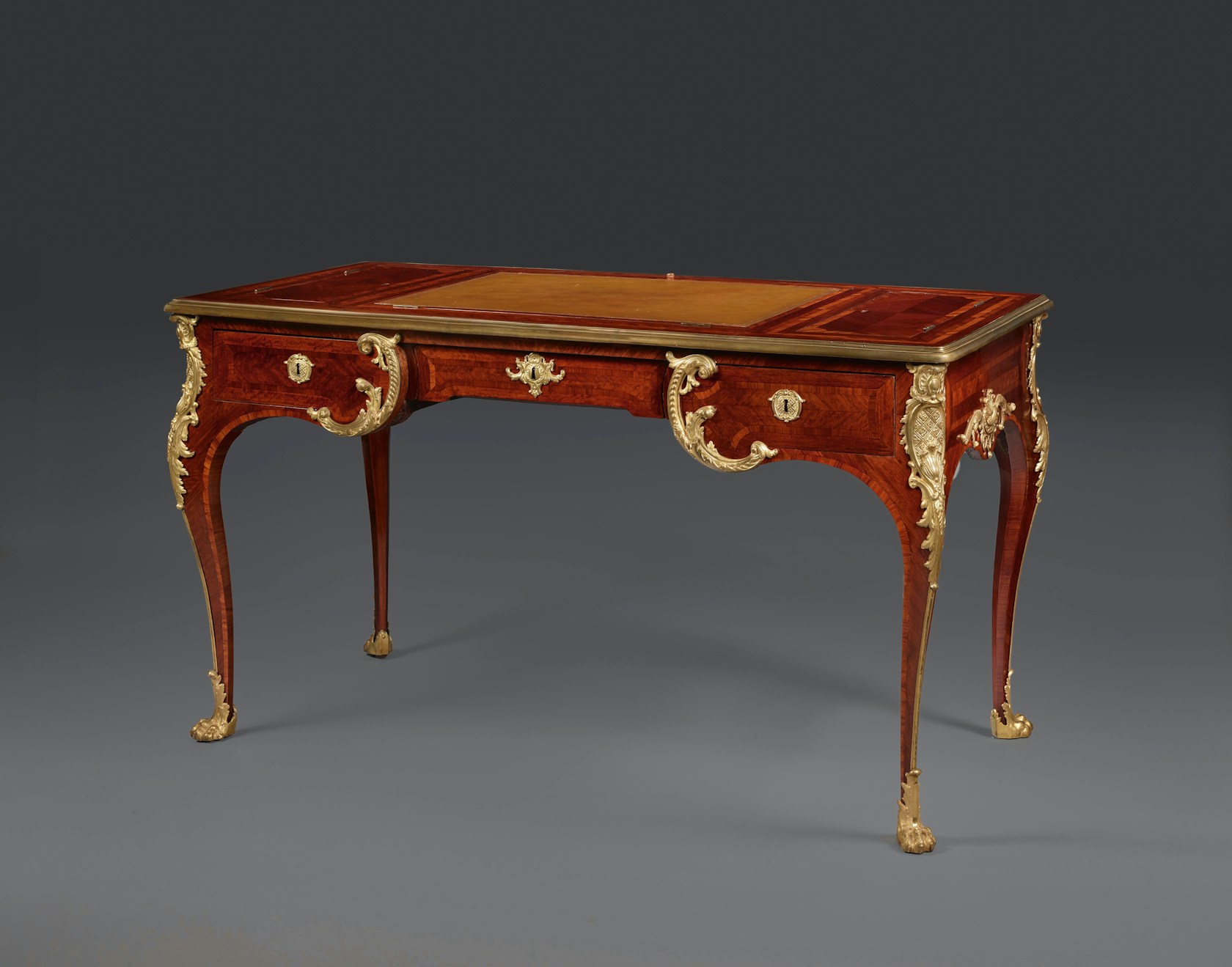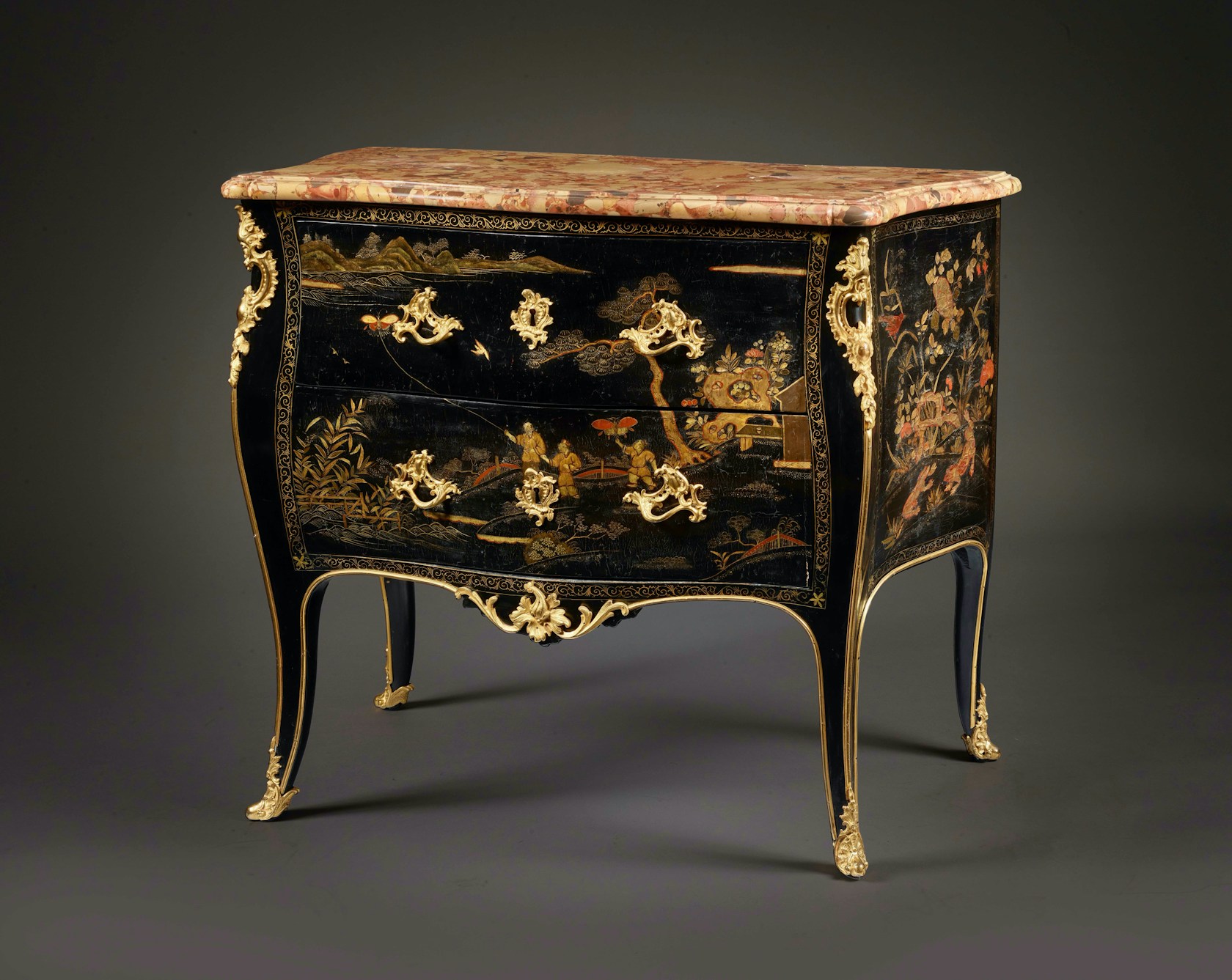
Exploring the Evolution of French Royal Styles, from Louis XIV to Louis XVI
Guillaume Léage discusses the aesthetic developments and material elements of antique French furniture
- By Guillaume Léage
- Meet the Experts
Director Guillaume Léage of Galerie Léage is part of the fifth generation of a family of antique dealers and specializes in 18th-century furniture and objets d’art, specifically works with royal or aristocratic origins, or works that have a companion piece in a museum or esteemed collection.
During the 18th century, the French Royal court was of great importance for defining taste, influencing what certain styles came to be known as. Here, Léage explores how these styles, connected to their name-sake royals, are identified through their aesthetic and material elements and developments.

Parisian lust and luxury of the Louis XIV style
The reign of Louis XIV (1643–1715), which saw the reconstruction of the lavish Palace of Versailles, marks a culmination in the decorative arts: furniture became a continuation of paintings and interior architecture and showcased the lust and luxury of the Parisian taste.
The period saw the rise of marquetry—the technique of applying pieces of veneer to create decorative patterns—in cabinetmaking, associating diverse materials of extreme preciousness, such as the exotic materials tortoiseshell and ivory, or indigenous woods like ebony, sycamore, and rosewood. Boulle marquetry—named after André-Charles Boulle (1642–1732), the major cabinetmaker of his time and principal cabinetmaker to the King—became even richer with mother-of-pearl inlay and by exploring the polychromy of tortoiseshell, tainted horns, pewter, and brass, leading to the rise of the flower motif in marquetry at the end of the 17th century. Rich in materials, the Louis XIV style also refers to a rich classical vocabulary, from acanthus leaves and trophies to shells and grotesques, to propagate the influence of the King through the European courts. The period’s maritime discoveries fueled an enthusiasm for exotic ornaments such as feathers, masks, or even lacquer pieces from East Indies, anticipating the later success of the chinoiseries.

Lightness and comfort reigned during the Regency
Torn between the heritage exemplified by the palace of Versailles and the Parisian renewal, the style of the Regency—the reign of Philippe of Orléans as prince regent (1715–1723)—perpetuated the generosity and symmetry of the Louis XIV period, but with a penchant for comfort. After the death of Louis XIV in 1715, a lightness appeared in the shapes of furniture, which was intended for the smaller, private apartments in the city—for example the flat desk, replacing the Mazarin desk. Materials including exotic woods such as amaranth, tulipwood, rosewood, kingwood, sycamore, and ebony were often used. After the exuberance of the Louis XIV period, the techniques during the Regency were simplified, for example with marquetry added to the frieze of a piece of furniture, or the slightly worked visual effects of butterfly wings. Charles Cressent (1685–1768), who was first trained as a sculptor, was a renowned cabinetmaker of this time and famed for his magnificent bronzes that also were included in the furniture as sculptural elements.

The fantastical rocaille of the Louis XV style
The lightness initiated during the Regency allowed for more movement, but during the reign of Louis XV (1715/1723–1774) a new harmony was introduced. The rocaille style was born, offering curves, abundance, and asymmetry in combination with the use of textile. The most common decorative themes were flowers, depicted as they were seen in masterful works by Dutch painters, and shell ornaments. Both motifs allowed variety, fantasy, and movement, and lead to the exoticism in vogue at the time. Also animals, which started to appear as a motif during the Regency, illustrate tales and pastorals, in particular birds which recall Asian lacquer screens. Fantasy also entered the carpentry, creating wondrous new shapes. In seating, this is interpreted through voyeuses and voyelles, chairs that are used in reverse and convenient for games played inside. The trade initiated with the founding of the French West India Company during the Louis XIV period brought curiosity and fantasy to the royal court, a style much appreciated by the merchants and their clientele. New materials such as lacquer, porcelain, or other exotic woods entered the French interiors. Lacquer screens previously imported were used to adorn furniture, a taste initiated by merchants such as Lazare Duvaux and Simon-Philippe Poirier, as they were the suppliers of these extremely precious materials.

The return of rigor during the Transition period
The emergence of art critics influenced the style and taste of the Louis XVI period (1774–1793). A subset wished for a return to “noble simplicity,” in opposition to the fantasy of the Rocaille. The Transition period is marked by the search for a new style which would progressively lead to the Louis XVI period. The period rejected the curves of the Rocaille and a returned to straight lines with furniture executed in woods such as mahogany and ebony. In his 1754 Supplication aux Orfèvres, Ciseleurs, Sculpteurs en bois pour les appartements & autres, artist and critic Charles-Nicolas Cochin pleads in favor of rigidity and respect of proportions and balance, praising the return to the antique vocabulary he learned during his travel in Italy with the marquis of Marigny, the brother of Madame de Pompadour. This vocabulary, from Greek ornamentations to post friezes, is applied with great rigor. It borrowed from the classic repertoire and produced an iconography inspired by the exhumation of the ruins of Pompeii and Herculaneum, and incorporated elements of tapestry, such as knots, braids, drapes, and festoons.

Neoclassical sobriety and elegance of the Louis XVI period
After a quest of lightness throughout two reigns, during the Louis XVI period the volume takes over the use of drawings. The Louis XVI style sees an abundance and a variety of ornaments such as latticework, medallions, rosettes, symmetrically elaborated arabesques, and fluted legs. However, sobriety is also sought through the use of mahogany wood as the preferred material—its veining being exploited at its most extreme during this period. Boulle marquetry as well as lacquer pieces of furniture, with a preference for Japanese screens, become prominent in interiors once more. During this period, Jean-Henri Riesener became the primary cabinetmaker, supplying almost exclusively to Marie-Antoinette. The Queen also influenced a version of the Louis XVI style that was more feminine and flourished, taking inspiration from nature and allegories, which became in vogue.


